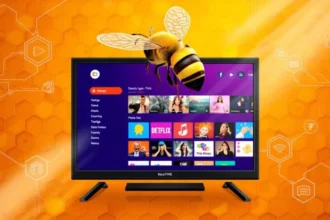When most people think of smartphones, they picture shiny glass backs, fragile edges, and slim designs that crack after a single drop. That’s fine for offices, cafes, and city life. But what if your daily routine involves construction sites, hiking trails, or rough weather? That’s where rugged smartphones step in. They’re designed for people who don’t want to baby their device every hour of the day.
Among the new rugged models in 2025, the Cubot KingKong 11 is worth highlighting. It’s not the most famous brand, but it’s one of those phones that makes you stop and think, “Wait, why don’t more manufacturers build phones like this?” A full breakdown can be found in this Cubot KingKong 11 Review, but I’ll share the essentials here.
Why Rugged Phones Are Getting Popular
It’s not just explorers and mountain climbers buying these phones anymore. I’ve met delivery drivers, field engineers, and even a few parents who told me rugged devices save them money in the long run. A regular flagship costs a fortune and breaks easily. A rugged phone usually costs less and lasts longer in real-world conditions.
Think of it this way: one accidental drop on concrete can kill a normal device. Rugged smartphones, on the other hand, are built with reinforced edges, thicker frames, and water-resistant seals. You can toss them in a backpack without worrying about scratches from keys or tools.
If you want to explore more models outside Cubot, you can check this collection of rugged smartphones, which shows just how wide the options have become.
A Closer Look at the Cubot KingKong 11
The KingKong 11 doesn’t try to be the slimmest phone. Instead, it’s unapologetically chunky, and that’s the point. From my perspective, the best part is the combination of ruggedness with features people actually want:
- A strong outer shell that shrugs off drops.
- IP68 waterproof rating for real-world accidents.
- A battery big enough to last beyond one day, even under heavy use.
- A camera setup that’s better than you’d expect from a rugged category phone.
It’s not going to compete with Samsung or Apple on sleekness, but that’s not its mission. Its mission is to stay alive when other phones would’ve died.
Who Is It For?
That’s a question I like to ask with every device review. Who is this phone really built for?
The KingKong 11 is clearly not for everyone. If you care about ultra-thin frames and want the lightest device possible, this isn’t it. But if you’re the type who works outdoors, spends weekends hiking, or just hates the idea of replacing a broken screen every six months, it makes sense.
I spoke to someone working in warehouse logistics recently, and he said he’d already cracked two “regular” phones this year. After switching to a rugged phone, he hasn’t looked back. That’s the kind of user the Cubot KingKong 11 serves best.
Comparing It With the Competition
The rugged smartphone market isn’t huge, but it’s growing. Brands like Doogee, Blackview, and Ulefone have their own tough models. What sets Cubot apart is often the balance between affordability and performance. You don’t pay a premium just for the armor.
Reviews of these phones often point out that while high-end flagships can outshine them in cameras or thinness, rugged devices are in a league of their own when it comes to longevity and toughness. That’s what people are paying for.
Final Thoughts
The Cubot KingKong 11 is a reminder that not all smartphones need to follow the same slim, fragile formula. Some are built with practicality in mind, and they serve people who need reliability above all else.
If you’re shopping for a device that won’t make you panic every time it slips from your hand, this model deserves attention. For a deeper dive, don’t miss the full Cubot KingKong 11 Review. And if you’d like to compare it with alternatives, this roundup of rugged smartphones is a great starting point.
At the end of the day, buying a rugged phone is about peace of mind. You’re not just paying for specs on paper—you’re paying for a device that fits a tougher lifestyle.

















